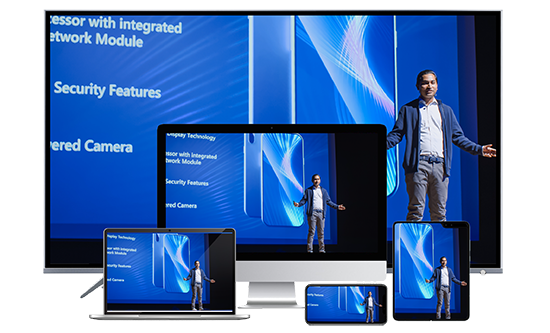Enterprise Video Predictions in a Post-Pandemic World

To say that the pandemic upended “business as usual” would be an understatement. On some fronts it significantly curtailed business, but for those companies that rapidly shifted to using video calls as a way to replace in-person meetings, the disruption often was offset by increased productivity.
As we enter the final quarter of 2022, with the Centers for Disease Control ratcheting COVID-19 quarantine and testing regimens back to the pre-pandemic levels, the Wowza team has asked me to provide a few insights into the use of enterprise video in a post-pandemic world.
I may not be the most qualified guest blogger on this topic, but I was fortunate enough to craft a survey about a year ago—and analyze the results, for presentation as part of a Streaming Media magazine event—that touched on the forward-looking expectations on this very topic.
What follows is a number of the highlights from that survey, as well as a request to all our readers to be part of the second annual Enterprise Video Trends survey that’s going on from now until late October 2022.
The link for the new survey is here. And the Help Me Stream Research Foundation team is offering a choice of one prize in a random drawing to be held after the survey’s close for those who leave their email address at the end of the completed survey.
So, what have been the biggest takeaways in terms of enterprise video?
Virtual Live Events Are Here to Stay
First, and this is a trend we’ve seen not just in enterprise-specific video survey but also in the broader industry-wide State of Streaming surveys that Help Me Stream / Streaming Media field twice a year, there is an upswing in enterprise live events.
The rate of respondents reporting that their organizations have increased live enterprise events has been rising over several surveys we’ve conducted throughout the Fall 2021 / Spring 2022 timeframe, which most people would classify as a post-pandemic period (or at least a post-lockdown period). This upswing followed a brief downturn in reported enterprise video usage in early 2021, which itself had been preceded by a massive uptick in enterprise video usage in 2020.
Our analysis, then, suggests that live enterprise video events have staying power, at least as long as companies continue to allow a large swathe of their workforce to continue remote-work employment.
On-Demand Event Flexibility vs. Hybrid Event Interactivity
A second trend, which we spotted way back in early 2021, was the fact that many respondents stated that they planned to travel to attend more professional development and trade show events, but that their desire was to attend most of these in a virtual event setting.
We’ve gauged this sentiment across more recent surveys and found that desire continues, although many of the respondents are also keen to attend at least a few in-person events and a few expressed interest in the long-term option of hybrid events.
When we delved deeper into the questions around virtual events, we found that many respondents made their choice of attending an online event as it happened (live) or at a later time (on demand) around three key factors: familiarity with subject matter, time zone differences, and the ability to ask questions.
The first and last factor go hand in hand, as respondents told us that — if they knew in advance, or if they’d attended a previous online event with a given trade organization and had a disappointing experience in terms of asking questions — they would opt to watch the event after the fact. This was also true for those who felt they needed more time to get adjusted to the content: those respondents stated that they would watch the on-demand version in chunks, sometimes multiple times, to get a better grasp on the subject matter.
One potentially unfortunate casualty of all this, though, is the hybrid event. For all the talk we heard last year about launching hybrid events throughout 2022, we’ve not seen that become a reality.
Some in-person events in the United States have at least offered a hybrid-event option for industry attendees to attend the kickoff keynotes over Zoom or Teams or Skype or any flavor of real-time streaming option, but that accommodation seems to have more to do with the reality of international travel (e.g., allowing European colleagues to join a keynote in New York before ether end of the European workday) than it does with a desire to hold hybrid events.

Live Continues to Deliver a Differentiated Experience
Circling back around to live enterprise events within companies, we also found that employees were more likely to watch town-hall events live. While we’re not certain whether those who told us they watched these events at a later time had anything to do with an inability to ask questions, we suspect that the upswing in viewership of live town-hall of all-hands meetings had as much to do with the breaking news nature of these types of events, especially if an employee felt they would be directly impacted by the news.
That’s a quick wrap up of some of the main enterprise video trends we’ve seen over the last year. We encourage readers of this blog post to make their voice heard in the brand new Enterprise Video Trends 2022 survey as a way to help us understand better the fluid nature of enterprise video. Results will be shared at the Streaming Media West 2022 in-person event in Huntington Beach, California in November.




